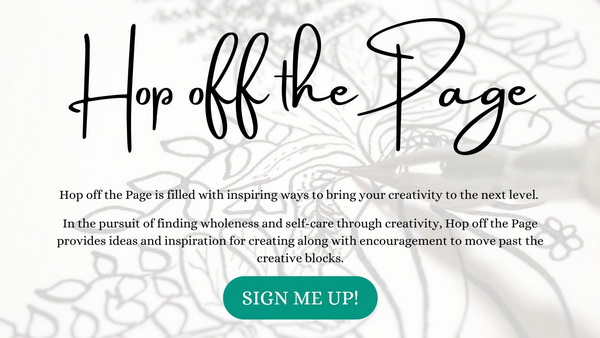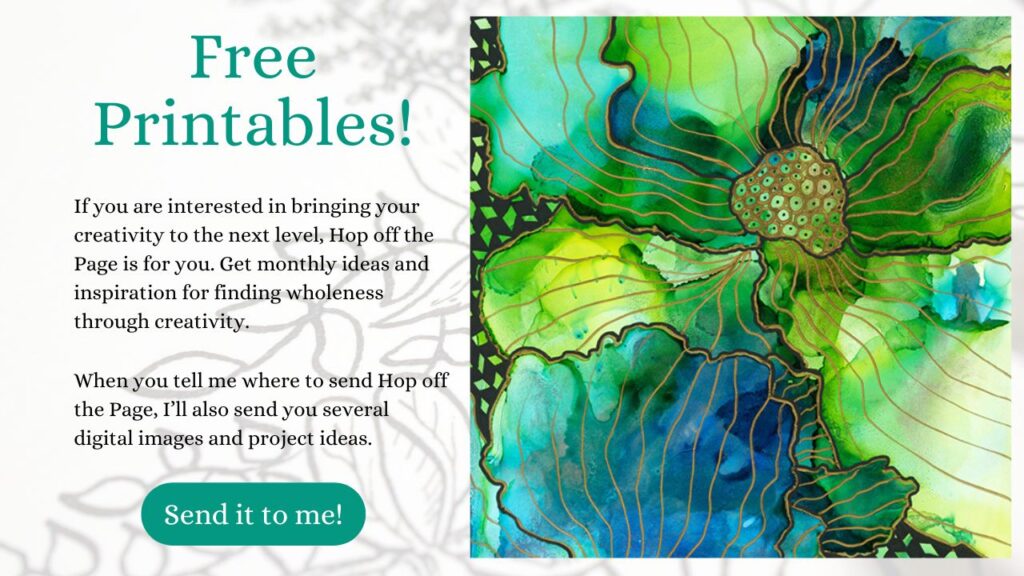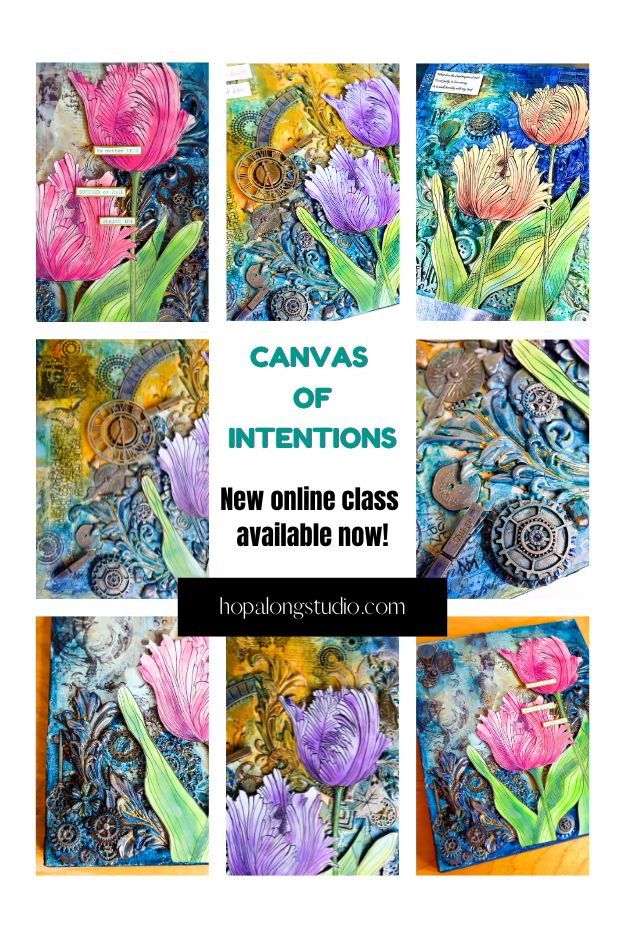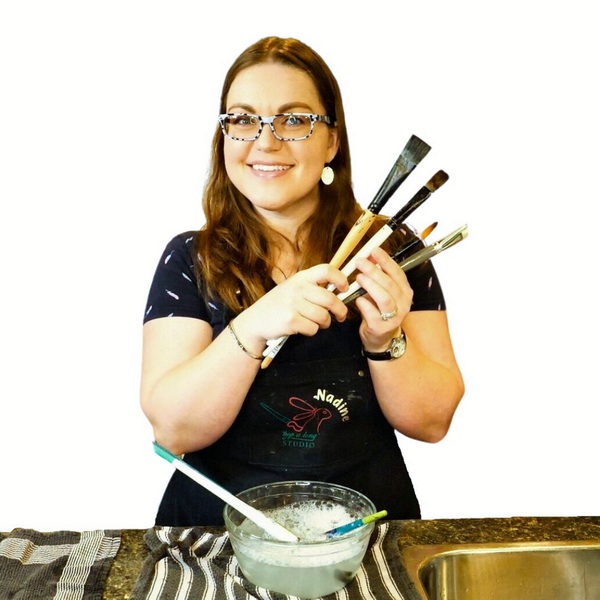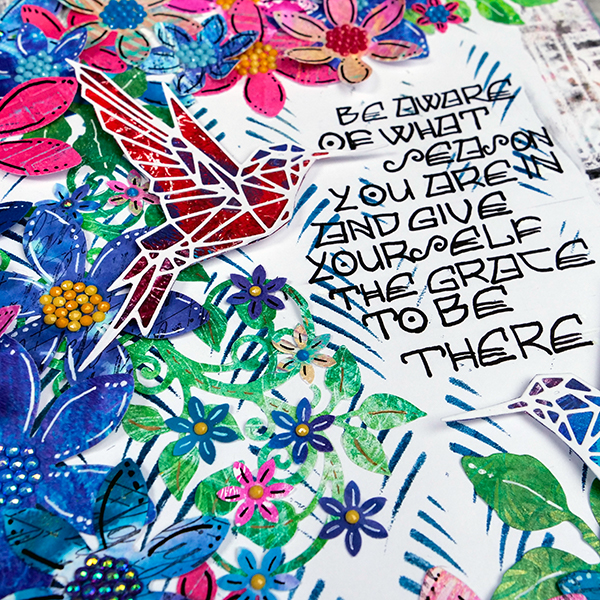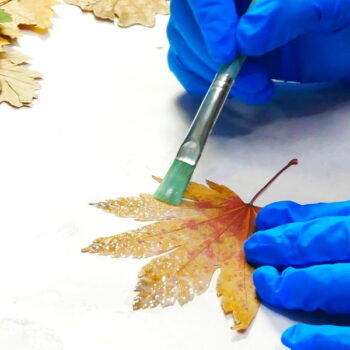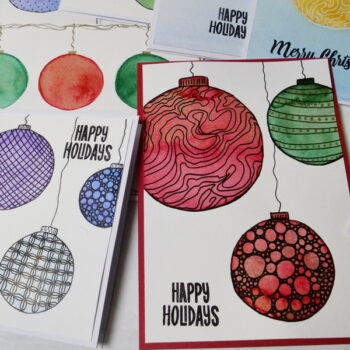
Looking for the Best Collage Glue? START HERE!
Are you looking for the best collage glue for your art but aren’t sure where to start? There’s a lot of different glues and they all have different uses. Join me as I demystify the variety of glues and learn how to get the best results with each of them in your collage and creative projects!
Make sure to stay to the end of the article where I share my favorite glue recipe and show you how to make it!
Hop-A-Long Studio is reader-supported. When you buy through links on our site, we may earn an affiliate commission at no cost to you. Learn more.
The Glue Stick

Most of us have used a glue stick at some point in our lives. They are inexpensive, easy to use and are a great way to apply thin paper to a project. Most of us have used a glue stick at some point in our lives. They are inexpensive, easy to use and are a great way to apply thin paper to a project.
These glue sticks are acid free, so you can use them with you photographs and the wax like stick makes it easy to apply and doesn’t create a lot of mess.
But I learned the hard way that for mixed media applications it isn’t my favorite collage glue. If you plan to use wet mediums on top, the paper will start peeling up off the surface.
- Strong, fast-bonding, and no mess
- Great for paper-based, school, home and office projects
- Washable, Non-toxic & Acid free
The Best Surfaces for the Glue Stick

As this is a lower tack glue, this generally works the best on things like magazine cut outs and thinner paper. If you’re looking for a glue that will hold heavy paper, I personally wouldn’t use a glue stick because there are other glues with stronger hold that work better.
The glue stick is a great option when you’re working with paper and dry mediums. You can easily glue papers to the surface, add in drawing and markers, and even paint splatters. It isn’t the strongest glue, but it gets the job done and isn’t messy.
The glue stick is also a great option for traveling, if you’re creating a junk journal to add in tickets, notes and photos as you go, this is a great option!
PVA White Glue
White glues, also known as PVA glue, are a good choice due to their strong hold, are easily available and work on a variety of surfaces. I find that with the hold and permanency of white glue, you can use wet mediums with them, which gives them an advantage over the glue stick. They have a more permanent hold when working with heavier paper and found objects.
My Favorite White Glue
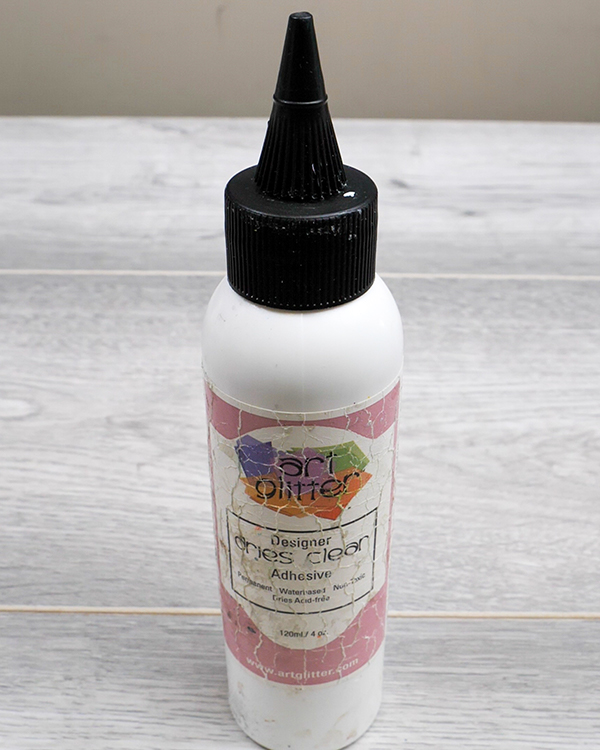
White glue comes in a lot of different price points and brands. My favorite white glue is Art Glitter Glue. It’s an industrial strength, acid-free adhesive that is permanent and will work on a variety of surfaces including wood, metal, plastic, cardboard and canvas.

My favorite thing about this glue is that it dries clear, so if you glue past an edge, you won’t see it when it dries. It also doesn’t have any sticky residue once it’s set, which is fantastic for creative projects. It also doesn’t have a strong smell, which is a nice bonus! It’s also not thick as many other PVA glues which makes it easier to apply and control.
This is an industrial strength, non-toxic, and water-based adhesive designed for glitter and paper applications. This adhesive is also strong enough to bond items such as cardboard, metal, wood, canvas, plastic, glass, and more. This glue is acid free and safe to use for any of your paper crafting projects.
Applications for White Glue
I use this glue for adding in all sorts of paper, heavy ephemera and found objects to my projects. I also use this glue for constructing journals as you have a bit of working time with this glue.
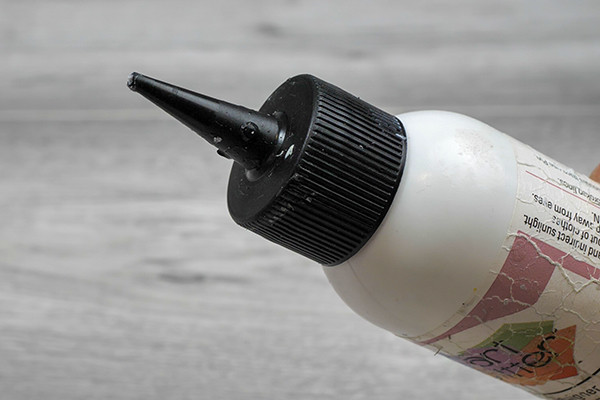
It is very easy to apply and has a nice tip to the glue bottle. There is also a precision tip that you can get for even more fine application. You can also get refills of this glue in larger containers, saving you money and this way you can reuse your glue bottles. You can see that mine has had a lot of love!
Other Brands of PVA Glue
Choosing your favorite white glue can be a very personal thing. There are other brands of glue that are similar to Art Glitter Glue including Bearly Art glue and Tonic Studios Nuvo Adhesive. Many of my friends have purchased all the white glues and tried them head to head. Why I asked them their opinion on the best PVA glue, they still find that Art Glitter Glue is their favorite.
Other Uses for This Glue

This glue isn’t just great for art projects, it also works for other uses, like my husband’s Warhammer miniatures. I had to get him his own glue bottle because he kept taking mine for basing his miniatures.
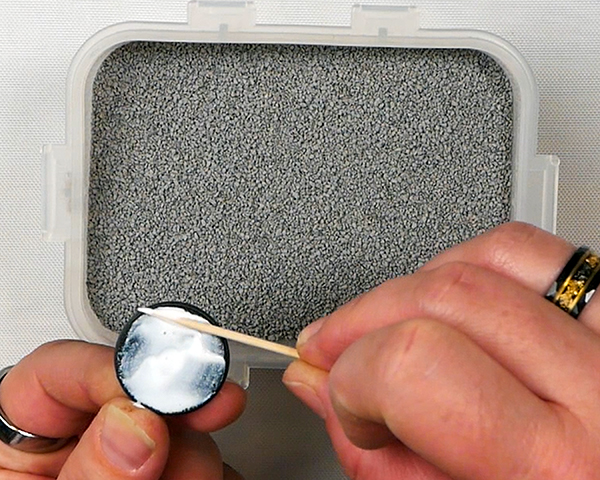
This glue works for adding in sand, little rocks and other things to his bases. He found the glue easy to apply and control and easy to manipulate around his bases. Just another example on how versatile this glue is.
Professional Art Adhesives

So those are a few cheaper adhesives that are available at craft stores. But if you’re looking to add your work to a canvas or board, or you want to make sure that your work is truly archival, here are some of the professional art adhesives that I use regularly in my art practice.
Matte Medium
Matte Medium or Gloss medium is an acrylic medium that has a consistency similar to maple syrup. It is thin and can be easily spread with a brush. This glue is acid free and archival, and is also non yellowing as it is a professional art medium.
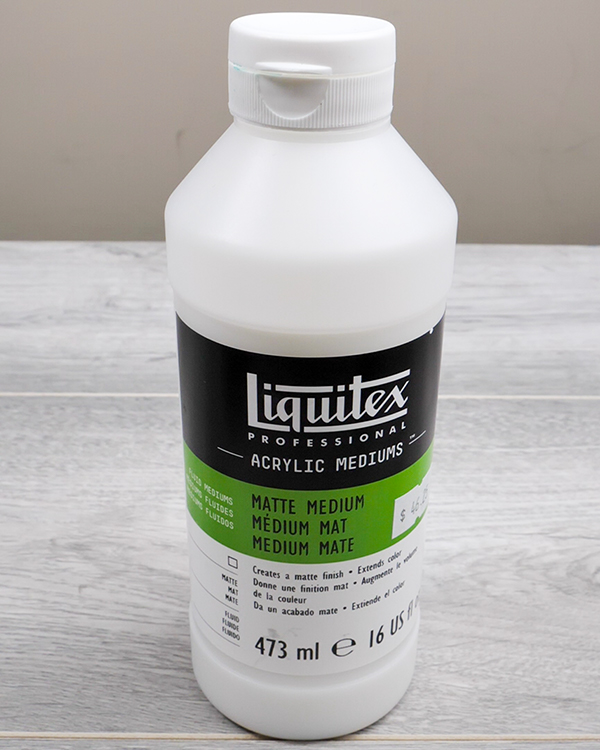
This is a great collage glue as it works well for adding designer paper, collage papers and heavy cardstock to projects. This is by far my favorite glue for adding napkins and tissue paper to projects. It has the hold that is needed but without tearing or damaging the delicate materials.
One of the most important features of this mediums is that it dries clear without stickiness, which makes it perfect for collage projects. Especially if you want to seal in your layers.
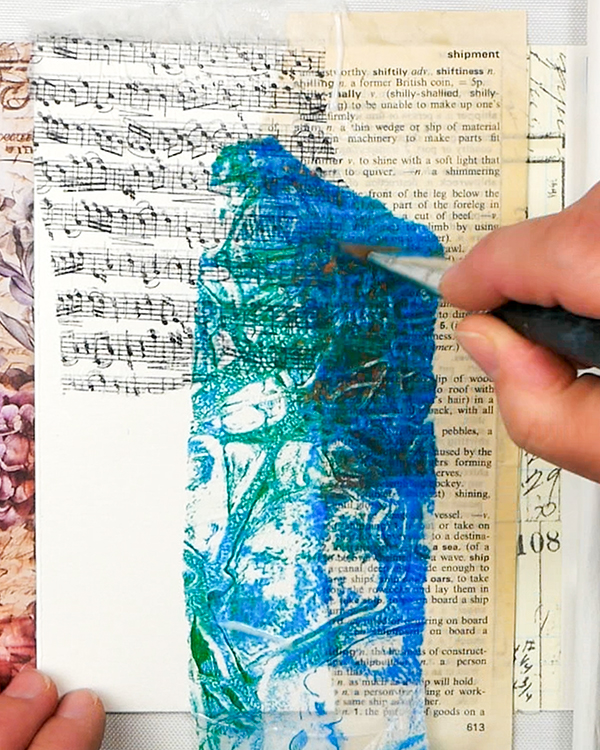
This medium isn’t just a great collage glue, it can be mixed with acrylic paints to be used in a variety of ways on your mixed media projects.
Liquitex Basics Acrylic Fluid Mediums improve the flow of acrylic paint colors, resulting in easier blending and increased transparency.
Creates a matte, non-reflecting finish when added to acrylic colors. Lightweight, non-toxic; Opaque when wet, translucent when dry.
What About Mod Podge?
Many of you may have Mod Podge and it will work similarly to Matte Medium. It is less expensive, but also has a very strong smell. This glue is acid free, but will yellow over time if exposed to light, thus affecting the look of your project.
I don’t use it because I can’t stand the smell. To me it smells like a combination of white glue with an off-putting chemical smell. After using matte medium for a while, I thought that I would give it a try again. The smell was as strong as I remember and my husband asked me to start using the more expensive art mediums again, because he couldn’t stand the smell either.
If you’re not scent sensitive or are on a very strict budget, Mod Podge is a good option. Just be aware of the pros and cons of using this medium.
Gel Mediums

Matte medium and gel mediums are both acrylic mediums, the difference is the thickness of the medium. Gel mediums come in soft, regular, heavy and extra heavy. This gives you a lot of different options for your creative projects.
If you are using heavier paper, especially on a canvas, I would suggest using a gel medium over matte medium. It’s going to create better hold on your canvas, which is important especially if you plan to sell your work.
This medium works the same way as your matte medium. If you add it underneath and on top of your papers, this is going to give it strength and protect the surface.
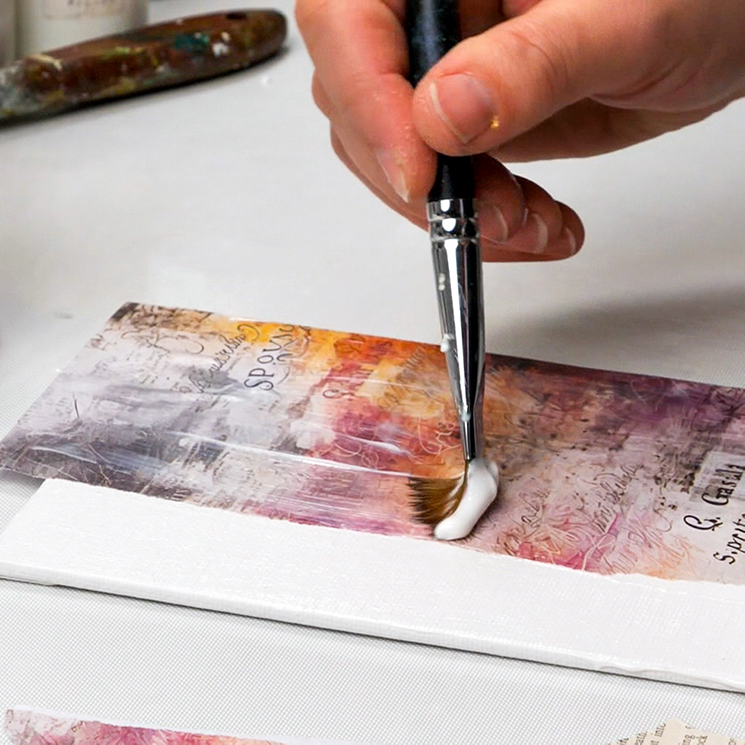
You don’t necessarily need to cover your surface with the gel medium, it’s only required if you want to seal the surface. But having the versatility to do both is a nice option. This is a way you can change how your project looks.
If you look as these samples, this is the difference between collaging with gloss versus matte gel medium. Your projects can take on a completely different look based off of the collage glue you use.
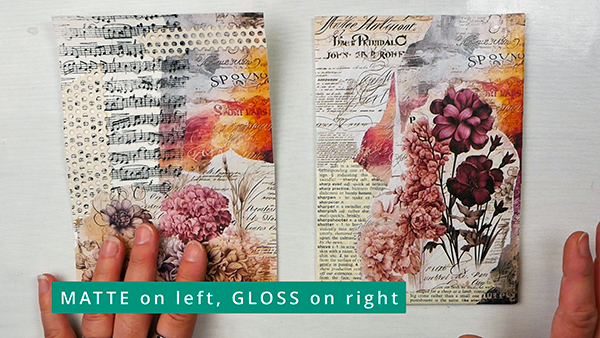
What Gel Consistency Do I Use?
If you’re new to gels, you might wonder what consistency of gel to use with which type of project. When working with paper, I would suggest a soft or regular gel. If you are adding in heavy metal pieces to your project, I would suggest using extra heavy gel.

Think of it as the heavier the material you want to add, the heavier to the medium that you want to add. Both this book and this canvas used extra heavy gel for adding in the pieces, They haven’t come off, so when they are added, they will stay permanently.
Thinner than Golden Heavy Body Acrylic colors, the Golden Soft Acrylic Gel Mediums are moderately pourable, hold only slight peaks, and are ideal for glazing and other techniques that require transparency.
Regular Gel Semi-Gloss is a translucent medium with a consistency similar to Heavy Body paints. Use for extending colors, altering sheen, increasing translucency and adhering collage elements.
Thicker in consistency than Golden Heavy Body Acrylics, the Golden Heavy Acrylic Gel Mediums hold peaks and dry translucent. They're ideal for thickening, altering sheen, and increasing translucency of acrylic paint.
Golden Extra Heavy Acrylic Gel Mediums holds peaks well and is ideal for impasto techniques. Along with the High Solid Gel, it's the thickest of the Golden gels.
Golden Acrylic Gel Mediums also act as adhesives in collage and mixed media projects that dry to form continuous films, offering excellent flexibility and resistance to chemicals, water, and ultraviolet light.
Other Uses for These Gel Mediums
Be aware that there are many other uses for these gel mediums besides using them as a glue. Make sure to subscribe to my newsletter to know when my next article is coming out. I’ll be sharing some other ways to use these products over the coming weeks!
If you’ve never done an assemblage project, but would like to try one, check out the class below. We not only talk about setting intention for the year, but how to use unique collage techniques that also incorporate assemblage techniques. Make sure to check out this class in my shop.
Yes Paste
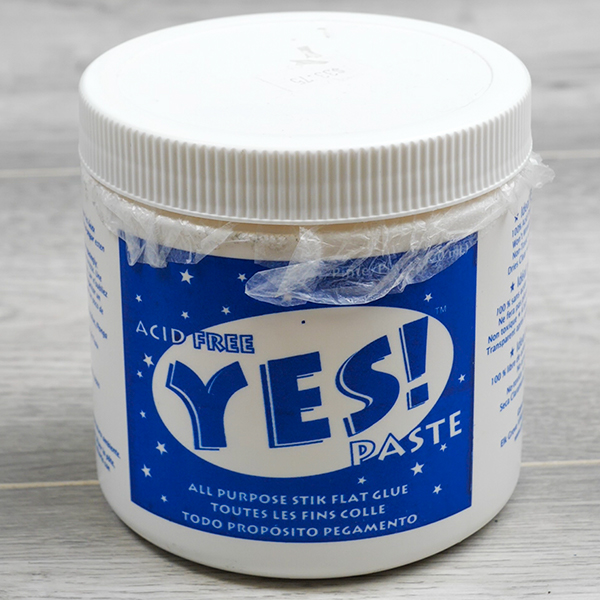
Many of the professional collage artists I know that show their work in galleries like to use Yes Paste as a collage glue in their projects. This a fabulous glue because it has very strong hold, is archival and works well for heavy papers as well as thinner papers.
The one downside of this paste is that it’s really thick, which can make it hard to apply. I find that I tend to have to use a palette knife with this medium to get it to spread. It won’t spread easily with a brush.
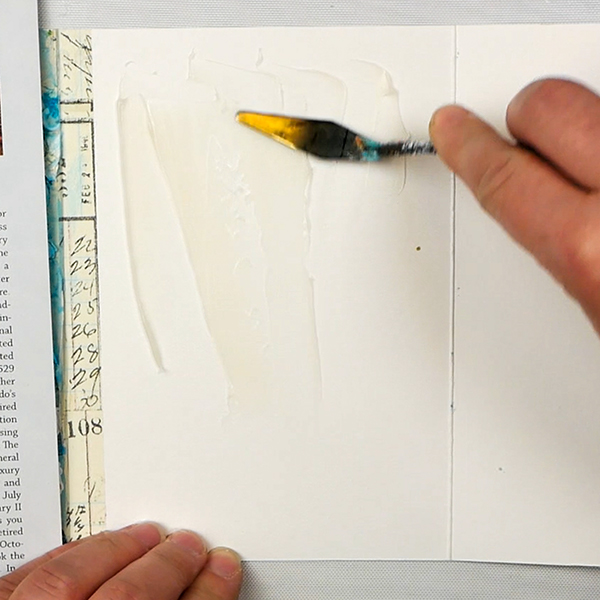
The other downside of this medium is that it will leave sticky residue, so it is meant to be used on the back of the paper only. But the great thing about this glue is that once it’s down, it’s not moving. I find that with the consistency of Yes Paste, because there’s not a lot of water in the glue mix, I tend to get less wrinkling and buckling in my projects.
Acid-free glue that is slow setting, dries clear and cleans up with soap and water. A must have for any collage artist!
The Secret Recipe
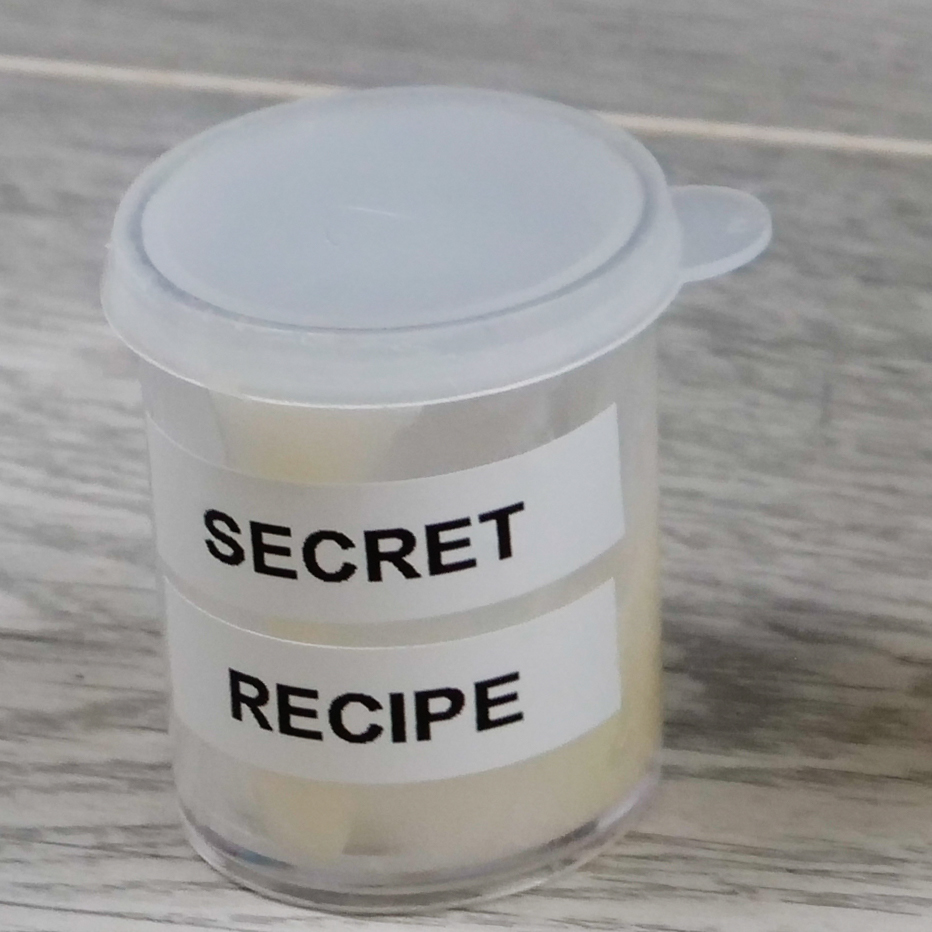
What if you own Yes Paste but find it hard to work with? Do you just leave it? Absolutely not! Here’s a collage glue recipe that I was shown by artist Gloria Gelo when I took her abstract collage class. This was a game changer to being able to use Yes Paste in my projects.
My Favorite Collage Glue Recipe
Take a small container and add in a liberal amount of Yes Paste inside it with a palette knife.
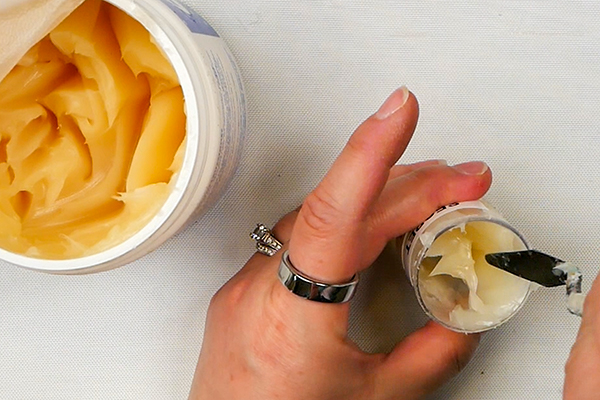
Then add in glazing liquid on top. For the ratio of these 2 mediums, think of adding caramel to a sundae. You want a liberal amount, but you shouldn’t have more caramel than ice cream.

Glazing Medium
Glazing liquid is great because it’s an acrylic product, but is different than matte medium. This medium increases transparency in paint and creates thin, luminous layers. Which makes it perfect for adding to the Yes Paste. I wouldn’t suggest adding water, as it will change the chemical makeup of the glue and it’s not going to give you the best results.
Golden Acrylic Glazing Liquid is great for glazing in fine art painting. It dries slowly, allowing artists extended periods of working time. This acrylic medium improves brushability and is useful for wet-in-wet blending.
Mixing the Glazing Medium & Yes Paste
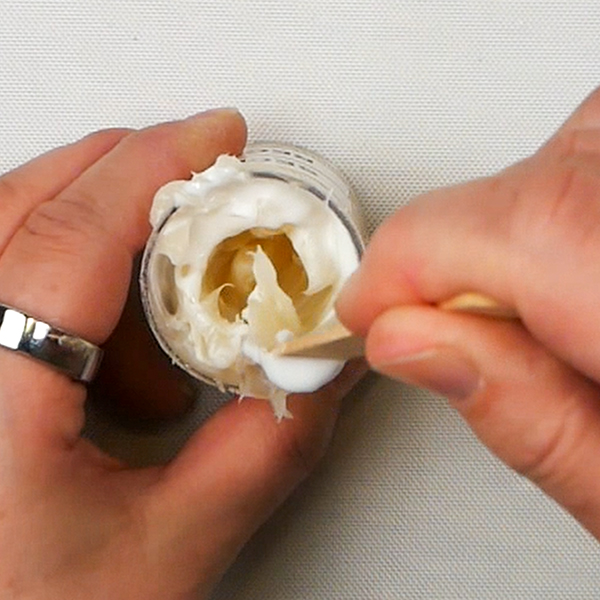
Take a popsicle stick or palette knife and mix the 2 mediums together. At first, they are not going to want to mix. You’ll have to put some muscle into this but eventually they will come together. You want a glue that is thin enough to apply with a brush, so you may need to play with the consistency a bit by adding in more Glazing Medium.

How to Use This Glue Recipe
To add this collage glue recipe to your pages, make sure to use a magazine to protect your surface. Brush from the center out to the edges when adding glue to your image. Also apply some to your page, then stick the pieces together. You should get great hold when using the paste this way.

When using this glue in a project, I wrap my brush in a baby wipe when I’m not applying glue. This way the glue doesn’t stiffen in the bristles. Make sure to use a brush you don’t care about just in case the brush gets hard from the glue. Also use a good quality brush soap when you are cleaning your brush after collaging.
If you do end up with a rock hard brush, check out this article on how you may be able to save your brush from the garbage using easy process.
Any Questions?

Any questions about these collage glues and how to use them? I’m aware that I’ve only covered a few glues and that there are many more out there. But these are my favorite adhesives and the ones I use all the time in my creative practice.
I’d love to know what your favorite glue is and how you use it. Please leave a comment below! I hope that this has given you ideas on how to use these glues in your next creative project!
Collage Inspiration
If you’re looking for some ideas on how to use collage in your mixed media project, check out these articles next:
New to Intuitive Collage? Start HERE!
The Secret to Stunning Collages…Use Tissue Paper!
Gel Print Collage Techniques You’ll Love!
Project Supply List
- Strong, fast-bonding, and no mess
- Great for paper-based, school, home and office projects
- Washable, Non-toxic & Acid free
This is an industrial strength, non-toxic, and water-based adhesive designed for glitter and paper applications. This adhesive is also strong enough to bond items such as cardboard, metal, wood, canvas, plastic, glass, and more. This glue is acid free and safe to use for any of your paper crafting projects.
Creates a matte, non-reflecting finish when added to acrylic colors. Lightweight, non-toxic; Opaque when wet, translucent when dry.
Liquitex Basics Acrylic Fluid Mediums improve the flow of acrylic paint colors, resulting in easier blending and increased transparency.
Liquitex Fluids Acrylic Mediums can be used as an extender and fixative for Liquitex Acrylic Paints, giving increased flow without affecting paint stability.
Liquitex Basics Acrylic Fluid Mediums improve the flow of acrylic paint colors, resulting in easier blending and increased transparency. Also makes an excellent glue for thin materials like tissue paper. Provides a gloss finish on any surface.
Acid-free glue that is slow setting, dries clear and cleans up with soap and water. A must have for any collage artist!
Regular Gel Semi-Gloss is a translucent medium with a consistency similar to Heavy Body paints. Use for extending colors, altering sheen, increasing translucency and adhering collage elements.
Thicker in consistency than Golden Heavy Body Acrylics, the Golden Heavy Acrylic Gel Mediums hold peaks and dry translucent. They're ideal for thickening, altering sheen, and increasing translucency of acrylic paint.
Golden Extra Heavy Acrylic Gel Mediums holds peaks well and is ideal for impasto techniques. Along with the High Solid Gel, it's the thickest of the Golden gels.
Golden Acrylic Gel Mediums also act as adhesives in collage and mixed media projects that dry to form continuous films, offering excellent flexibility and resistance to chemicals, water, and ultraviolet light.
Canvas boards are great for making small works of art. This 5" x 7" size is easy to frame, acid-free, pre-gessoed, and created with canvas made from cotton.
The Real Value art brushes are ideal for all types of art-making from acrylic and watercolor paintings to painting with oils and tempera.




